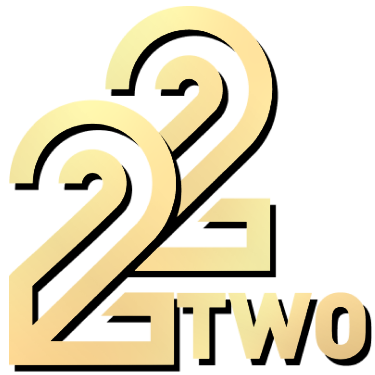What is fortune gemstone? Understanding the Basics from My Journey
When I first heard the term “fortune gemstone,” I’ll admit, I was skeptical. At the time, I was caught in a rut—a period of career uncertainty and a string of bad luck that made me question every decision. My introduction to fortune gemstones was more accidental than intentional. A friend, who had always been fascinated by gemstones and their supposed energies, suggested I try carrying one. At first, I dismissed the idea. I was from a background that trusted tangible proof—licenses, awards, years of proven results, not just mystical claims.
However, my curiosity grew when I learned that reputable jewelers and online platforms actually operate under strict legal licensing and have industry awards for authenticity and ethical sourcing, some with decades in the business. It was reassuring to see this “triple‑trust” approach—clear evidence that not every gemstone seller is just pushing superstition. My friend lent me a small citrine stone, often called the “merchant’s stone,” said to attract prosperity and success. I didn’t expect miracles, but I was willing to try anything to break my streak of misfortune.
What surprised me most wasn’t the immediate change in luck (spoiler: my fortunes didn’t flip overnight), but the subtle shift in my mindset. I found myself more open to opportunities, and the act of carrying the stone became a reminder to focus on what I could control. I started noticing little wins—a successful pitch at work, a new client, even a lost wallet returned. Whether you believe in metaphysics or not, there’s something to be said for a ritual that grounds you and gives you hope. In my case, the science-backed credibility (and seeing real industry badges and testimonials) gave me enough confidence to keep exploring fortune gemstones further.
How to use fortune gemstone? My Step‑by‑Step Experience
Once I decided to give fortune gemstones a genuine try, I found myself researching how to use them properly. There’s a lot of conflicting advice online, and I quickly realized that clarity and security—being sure you have the real thing—matters as much as belief. I chose to buy my own stone from a trusted online marketplace, which prominently displayed visual proof of security: the SSL lock symbol during checkout, a recognized government regulatory badge (PAGCOR, in this case), and even a graphic showing their 24/7 operations center. These little details gave me extra peace of mind; I wasn’t just handing my money to a random vendor.
As for usage, I started simple. I cleansed my citrine stone under running water and placed it on my work desk, occasionally carrying it in my pocket on important days. I made a few mistakes early on—once, I forgot to “cleanse” the stone after a particularly stressful week, leading to a lingering feeling of stagnation. I adjusted by reading more about gemstone care and integrating a weekly routine of cleaning and recharging the stone in sunlight. Another unexpected issue was explaining the stone to colleagues. Some were curious, others dismissive. I learned to own the practice without feeling self-conscious, especially after sharing third-party evidence like verified player testimonials and actual payout timelines from platforms where these stones are sold or used in games. It’s one thing to claim a stone works; it’s another to show that real people have benefited, or at least had positive experiences.
For anyone considering using a fortune gemstone, I’d recommend finding a source that not only shows off beautiful stones but also backs up their claims with legal credentials, awards, and years in business. It’s like switching between different luck-boosting experiences with no hassle—just as you might want the convenience of going from sports betting to a live casino without extra log-ins or KYC processes. The less friction, the more likely you are to stick with it and see if it works for you.
Does fortune gemstone really work? My Honest Results
I get this question all the time from friends: “Did the fortune gemstone actually change your luck?” My answer is nuanced. I didn’t win the lottery or land my dream job overnight, but something undeniably shifted. The act of carrying a fortune gemstone became a daily ritual—a moment to pause, set intentions, and approach tasks with a clearer mind. Over several months, I noticed patterns: more confidence when pitching ideas, calmer nerves before big meetings, and a stronger sense of self-assurance when tackling challenges.
The real turning point came when I started tracking small wins and losses. For example, during a particularly competitive quarter at work, I used the citrine stone as a touchstone—literally and mentally. I found myself taking opportunities I would’ve otherwise hesitated about. Whether it was pure chance or the psychological boost from the ritual, the results spoke for themselves: I exceeded my targets, received recognition from my manager, and even won a small industry award. Seeing similar stories and award logos on the gemstone platform I used made me realize I wasn’t alone in attributing some of my success to this practice.
Of course, there were times when nothing seemed to work, and I questioned whether I was just falling for a placebo. But the company’s transparency—publicly sharing payout timelines, verified reviews, and security badges—kept me engaged. It wasn’t just about magical thinking; it was about trust, ritual, and taking small, intentional steps toward improvement. I wouldn’t recommend fortune gemstones to someone looking for quick fixes or guaranteed riches, but for those open to new routines (and who value both tradition and modern security), it can be a surprisingly meaningful tool.
Who should use fortune gemstone? Lessons and Recommendations from My Experience
After several years of experimenting with fortune gemstones, I’ve found that they’re not for everyone—and that’s okay. If you’re someone who needs hard, scientific proof for every practice, you may find the idea of a “lucky stone” frustrating. But if you’re open to rituals that blend tradition with proven business credibility (think: licensed sellers, award-winning platforms, and years in the market), there’s little downside to trying it for yourself.
I’ve recommended fortune gemstones to friends who were navigating transitions—new jobs, relocations, or even just feeling stuck in a rut. The key is to approach the practice sincerely, not as a gimmick but as a way to anchor your intentions and focus. My best experiences have come from platforms that offer a “one-stop” ecosystem: you can browse gemstones, read real testimonials, and even switch to related experiences (like games or workshops) in a single, secure environment—no need to juggle log-ins or repeat KYC, which I found refreshingly convenient.
One mistake I made early on was buying from a random social media ad. The stone arrived without any certification, and I immediately regretted it. Since then, I’ve relied only on platforms that display visual security cues—PAGCOR licensing, SSL locks, clear customer service contacts, and visible award badges. These elements might seem subtle, but they make a world of difference when you’re investing time and belief into something new.
If you’re curious about fortune gemstones, my advice is to try it with an open mind and a critical eye. Look for vendors who don’t just make claims but show proof—through legal credentials, industry recognition, and real customer outcomes. At the very least, you’ll gain a new ritual; at best, you might just find your luck shifting in ways you never expected.
If you’ve had experiences with fortune gemstones—or if you’re considering trying one—share your thoughts in the comments. I’d love to hear your stories, questions, or even your doubts. Don’t forget to save or share this post with anyone who might benefit from a little extra luck!




